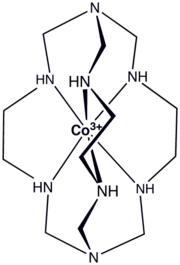Alan Sargeson facts for kids
Quick facts for kids
Alan Sargeson
|
|
|---|---|
 |
|
| Born | 30 October 1930 Armidale, New South Wales, Australia
|
| Died | 29 December 2008 (aged 78) |
| Scientific career | |
| Fields | chemistry |
| Thesis | The metal oxygen band in inorganic complexes (1957) |
| Doctoral advisor | Francis Patrick Dwyer |
Alan McLeod Sargeson (born October 30, 1930 – died December 29, 2008) was an important Australian chemist. He was especially known for his work in inorganic chemistry, which is the study of chemicals that don't mainly contain carbon.
Early Life and Education
Alan Sargeson was born in Armidale, New South Wales, Australia. He went to the University of Sydney for his studies. He earned his Ph.D. (a high-level university degree) in 1956. His teacher and guide for this research was Francis Patrick Dwyer.
Career and Discoveries
After finishing his studies, Sargeson started working at the University of Adelaide. In 1958, he went back to work with Francis Patrick Dwyer at the Australian National University.
Sargeson was famous for his work in a field called coordination chemistry. This area of chemistry looks at how metal atoms connect with other molecules. He was also interested in bioinorganic chemistry, which studies how metals are used in living things.
Throughout his career, Sargeson studied stereochemistry. This is about the 3D shapes of molecules. His research team also looked at how certain parts of molecules, called amine ligands, reacted. This led to the creation of special cage-like molecules known as "sepulchrates."
Awards and Recognition
Alan Sargeson received many important awards for his scientific work.
- In 1983, he was chosen as a Fellow of the Royal Society (FRS). This is a very high honor for scientists in the United Kingdom.
- He also became a member of the Australian Academy of Science.
- He was recognized by the U.S. National Academy of Sciences as a corresponding member.


